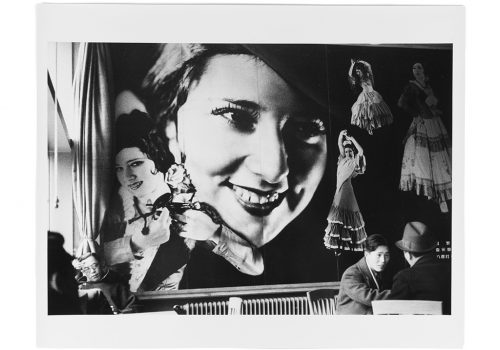On 18 – 19 May, the Special Edition of The London Photograph Fair returns to The Great Hall at King’s College, adjacent to Somerset House. The fair, which coincides with Photo London, is the only established fair devoted to vintage photography in the UK.
This year, Maggs Bros. Ltd will focus on a single photographer, Kineo Kuwabara (1913 -2007) and the images he took in Tokyo during the 1930’s. Titus Boeder of Maggs Bros explains, “These are remarkable photographs. They bring the entire period to life. They show history in a nonchalant way – as it was – speaking to us deeply. Kuwabara often included adverts, billboards, shop-signs and announcements in his compositions. There is hardly any distance between the people and the photographer. These are images from before the storm. There are notes of approaching danger in the newspaper headlines, the image of the sun rising after the military coup is particularly ominous… but overall there is a lack of concern, people just go about their daily life energetically or calmly. Kuwabara is close to them. He is hunting, catching moments of significance.”
And amongst those significant moments are Mogas and Mobos, dressed in their finest. Boeder explains, “Moga is a Japanese term that was used at that time. It’s a short form of Modern Girl”. The male counterpart was ‘Mobo”, short for “Modern Boy”. This is the first time these images have been exhibited in the West, Boeder says, “Kuwabara’s work was practically unknown in Japan until 1973 when he had his first solo exhibition in Tokyo. This led to him being regarded as one of Japan’s foremost street photographers. Nobuyoshi Araki did much to promote his work and the pair had a joint exhibition, “Love You Tokyo”, at Setagaya Art Museum in 1993.”
So why did it take so long for Kuwabara to gain recognition? Boeder continues, “He never worked commercially. He was a self-taught amateur photographer. His parents were pawnbrokers. When he was young he worked in the family business but spent most of his spare time on the streets photographing everyday life in Tokyo – particularly the fashionable districts of the Ginza. During the war he went to Manchuria to take photographs for military purposes. After the war he became a noted art critic and editor for several major photo magazines, ARS Camera, Sankei Camera, Camera Geijutsu, The Photo Image, and others, essentially putting the nurture of new talent and photography criticism ahead of his own photography. So only those very close to him were aware of what a marvellous photographer he was”
That would change with his 1973 exhibition entitled ‘The Lost Metropolis’ at the Ginza Nikon Salon, Boeder says, “The exhibition was a complete revelation, not only for photographers but also the general public. It was the first time that photographs from 1930’s were shown publicly and for many survivors of the war his work was a source of great nostalgia. In the following year he published a photobook entitled ‘Tokyo Showa ju-ichi nen’ which established him as a major figure in Japanese photography. It was followed by several other books but few in the West have heard of him so I’m extremely pleased to be able to show his work at The Special Edition of The London Photograph Fair.”
















